Type II Anodizing
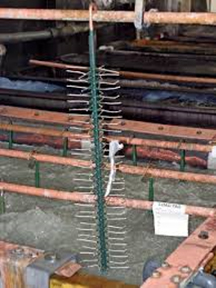
Sulfuric anodize, commonly referred to as Type II anodizing, is formed by using an electrolytic solution of sulfuric acid at room temperature and a current density of 15 to 22 Amps per square foot. The process will run for 30 to 60 minutes depending on the alloy used. This will produce a primarily clear coating, depending on sealing. Typically 1/2 of the coating thickness will build up per surface and 1/2 will be penetration.
Type II Anodizing is most commonly based off the military specification MIL-A-8625. This is the standard specification used around for the world for commercially anodized aluminum in the medical, aerospace, and automotive industries as well as for military and defense applications. It is an electrochemical process done in a sulfuric acid bath to speed the natural oxidation of the aluminum alloy. This provides an oxide layer with improved wear resistance, hardness, and corrosion resistance.
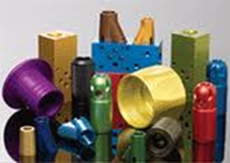 There are many benefits of Type II Anodizing. A sealed anodized part is stain resistant, easy to clean, and is heat resistant up to the melting temperature of the aluminum itself. The process can be applied to all alloys of aluminum. The process gives the aluminum improved paint adhesion as well as providing good electrical insulation. The corrosion resistance that it provides is excellent for all applications including marine, industrial, high humidity, and even outer space. The part is able to withstand a minimum of 336 hours of 5% salt spray testing per ASTM B 117. The part can be bright dipped as well to produce an appearance that is much brighter and has more reflectivity than the raw part itself.
There are many benefits of Type II Anodizing. A sealed anodized part is stain resistant, easy to clean, and is heat resistant up to the melting temperature of the aluminum itself. The process can be applied to all alloys of aluminum. The process gives the aluminum improved paint adhesion as well as providing good electrical insulation. The corrosion resistance that it provides is excellent for all applications including marine, industrial, high humidity, and even outer space. The part is able to withstand a minimum of 336 hours of 5% salt spray testing per ASTM B 117. The part can be bright dipped as well to produce an appearance that is much brighter and has more reflectivity than the raw part itself.
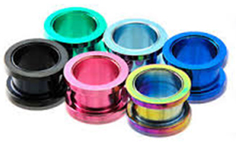 A big feature of Type II Anodizing is the ability to dye the part to a variety of different colors. These can include black, blue, purple, yellow, red, green, gray, orange, and any number of combinations of different colors. This dyeing is useful for part identification, inventory control, and pure aesthetics. Most colors are light fast and can withstand very bright or hot environments without degradation of the color.
A big feature of Type II Anodizing is the ability to dye the part to a variety of different colors. These can include black, blue, purple, yellow, red, green, gray, orange, and any number of combinations of different colors. This dyeing is useful for part identification, inventory control, and pure aesthetics. Most colors are light fast and can withstand very bright or hot environments without degradation of the color.
There are hundreds of governmental, industrial, and commercial anodizing specifications in use, each with their own method of specifications for coating, seals, dyes, etc. Any anodizer should recognize the Type II designation to indicate a sulfuric anodize, Class 2 to indicate a dye. This anodizing meets Mil-A-8625.
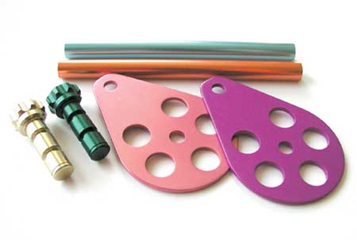 Sporting goods
Sporting goods- Marine products
- Electrical products and enclosures
- Aerospace Automotive
- Motorcycle
- Appliances
- Architectural aluminum-door frames, windows frames and extrusions
- Lighting fixtures
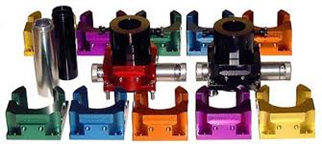 Corrosion Resistant …Comparable to Stainless Steel¹
Corrosion Resistant …Comparable to Stainless Steel¹ - Surface Hardness …Increased Scratch Resistance¹
- Conductivity …Non-conductive up to 1000 V¹
- Aesthetics …Many color choices
- Color Durability …Colors remain vibrant and fade resistant
Hardness Comparison Chart
| Metal Type |
Rockwell Surface Hardness Rating |
|
|
Low |
High |
|
| Stainless Steel |
50 |
72 |
| Unanodized Aluminum |
38 |
44 |
| Type II Anodized Aluminum |
48 |
55 |
